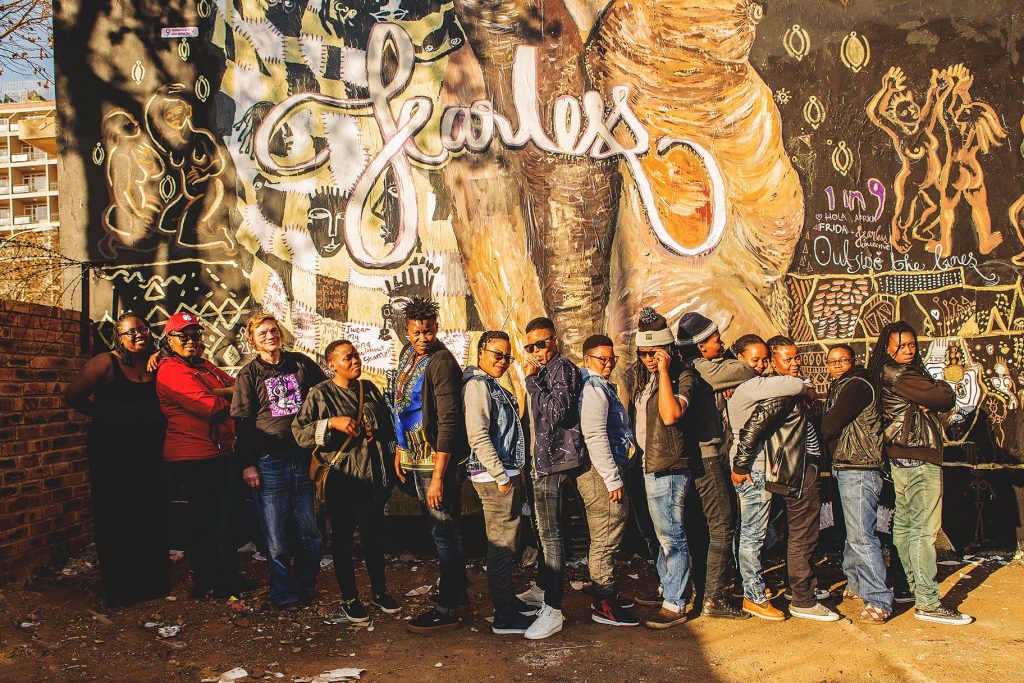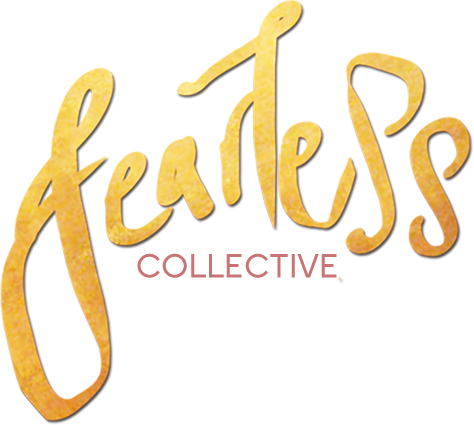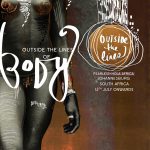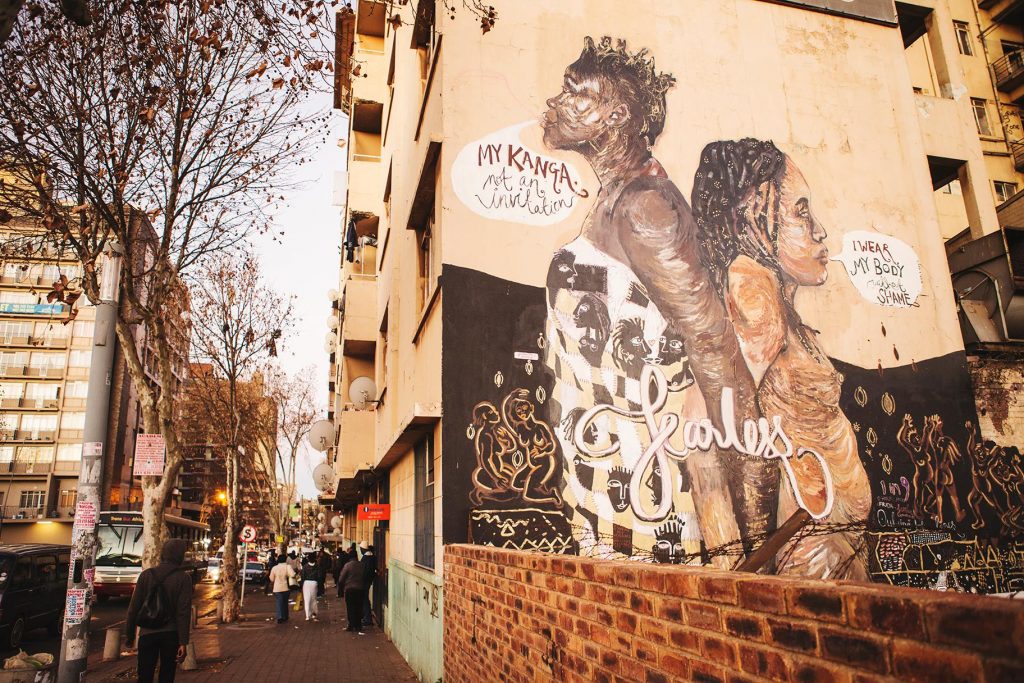








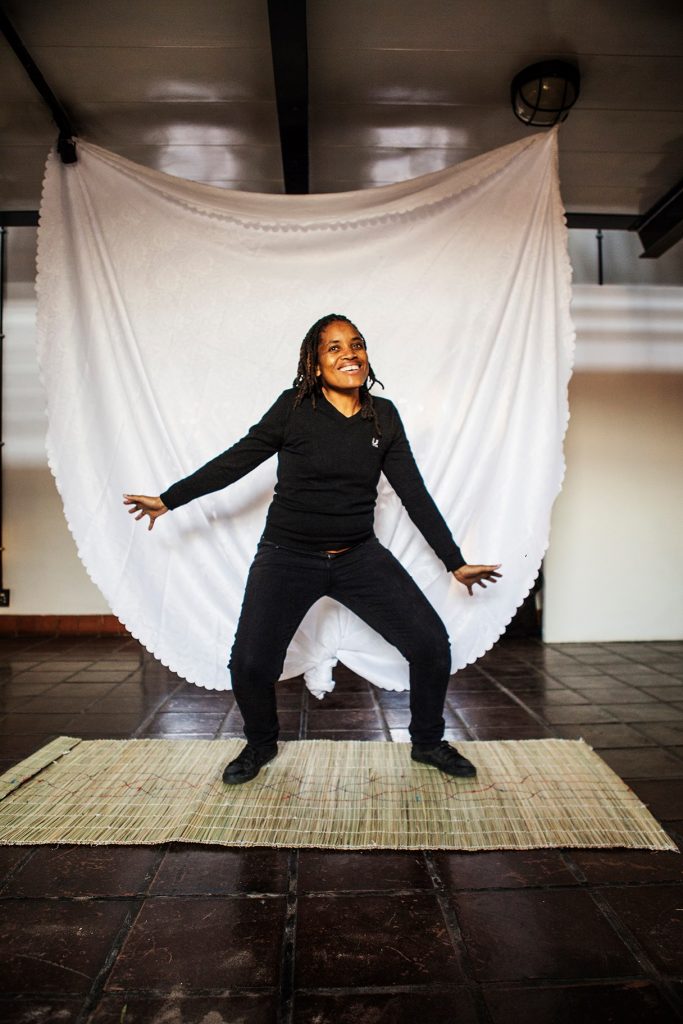


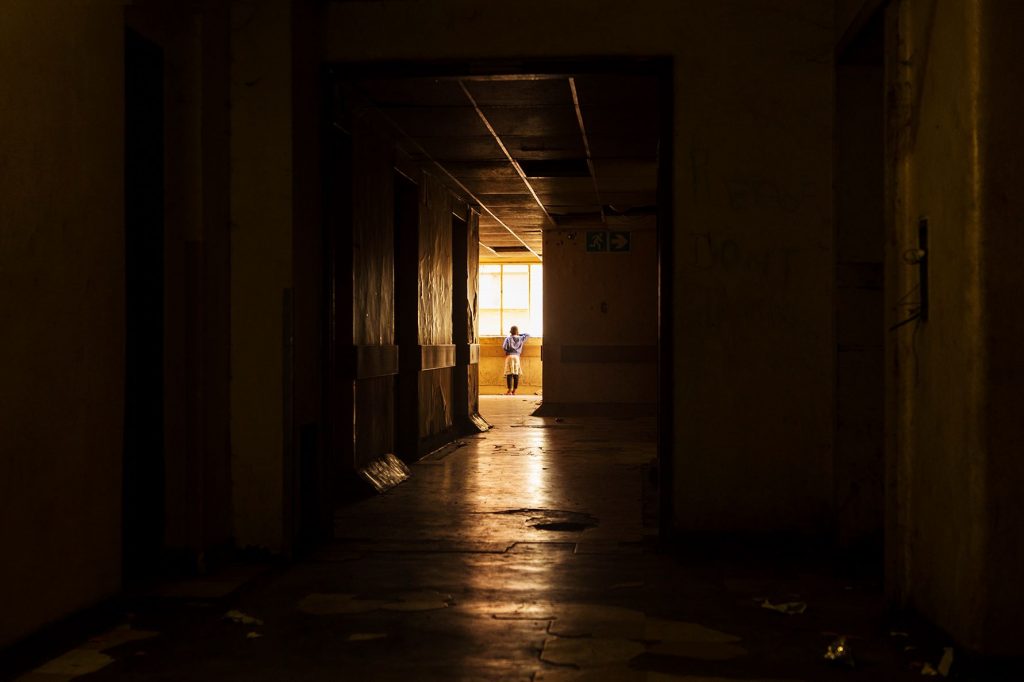





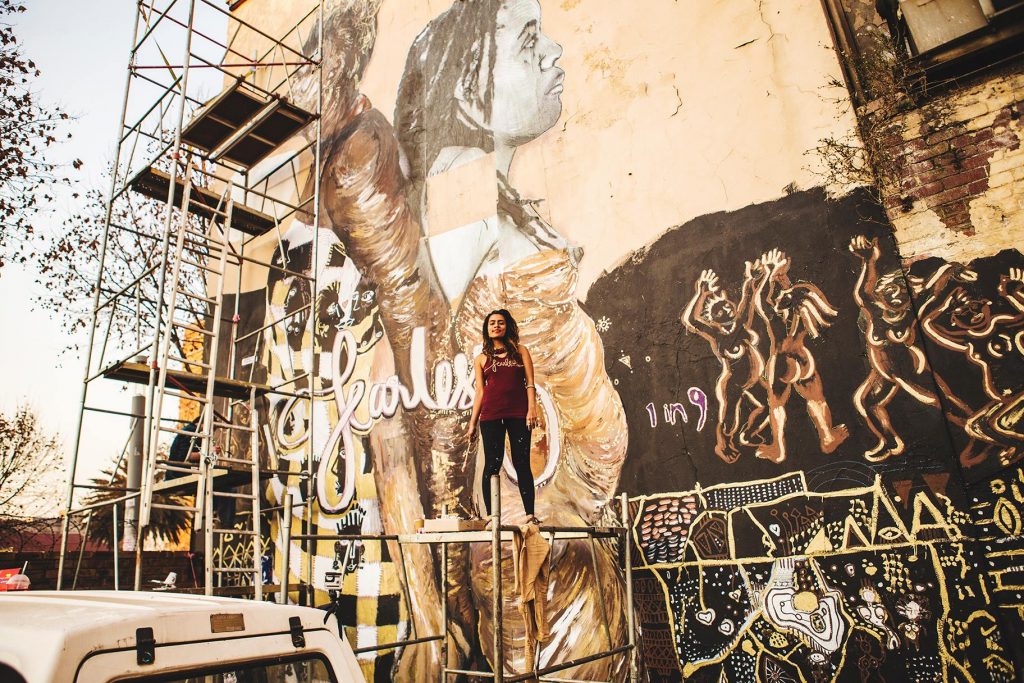


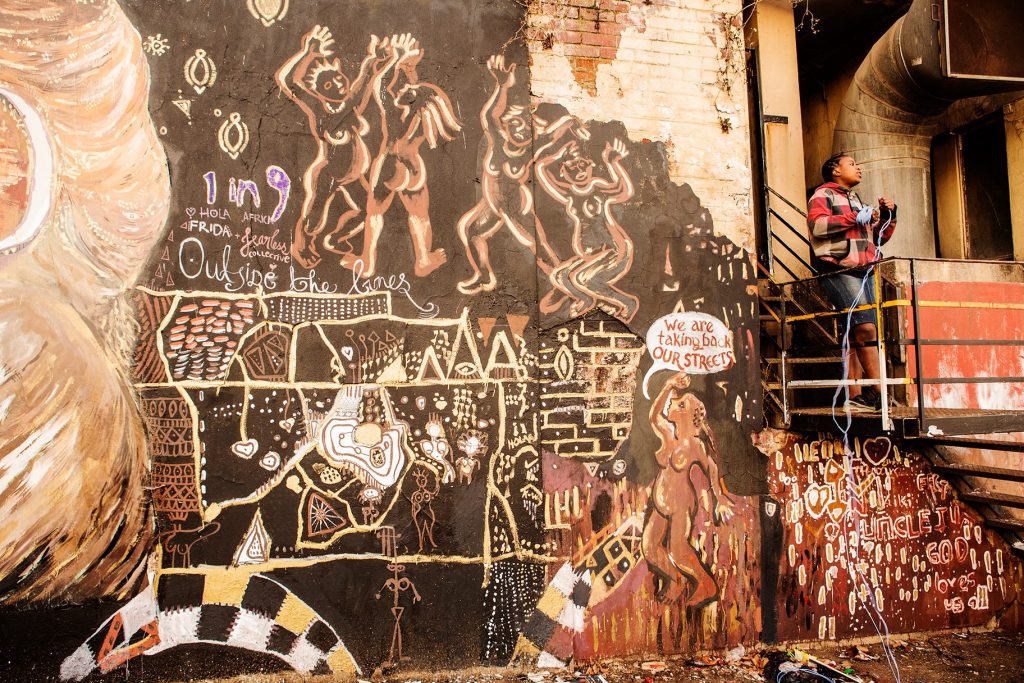
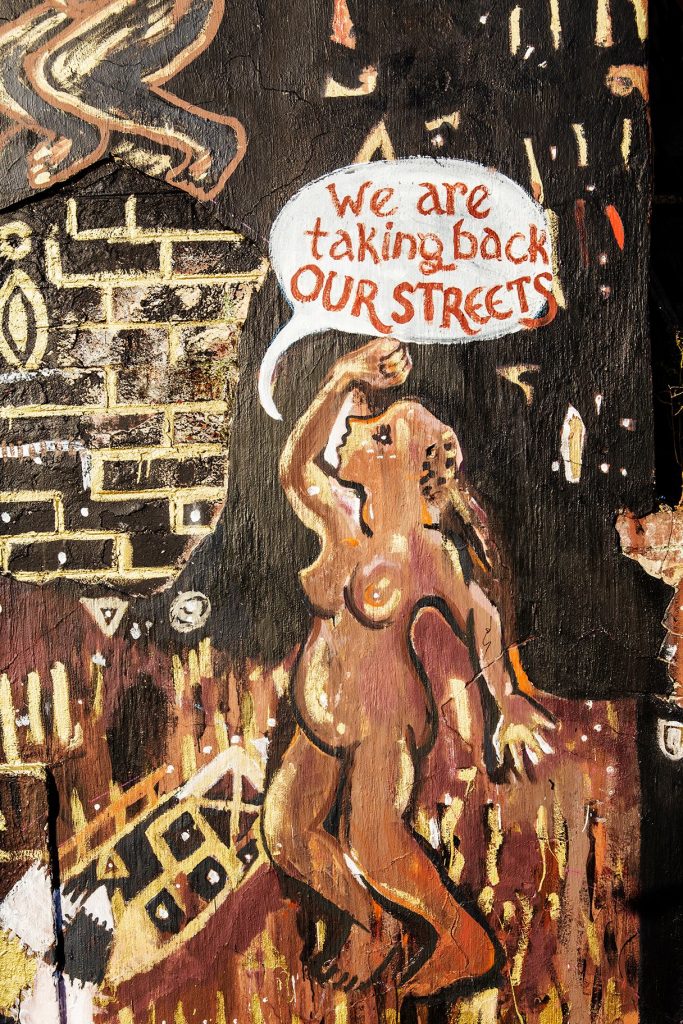

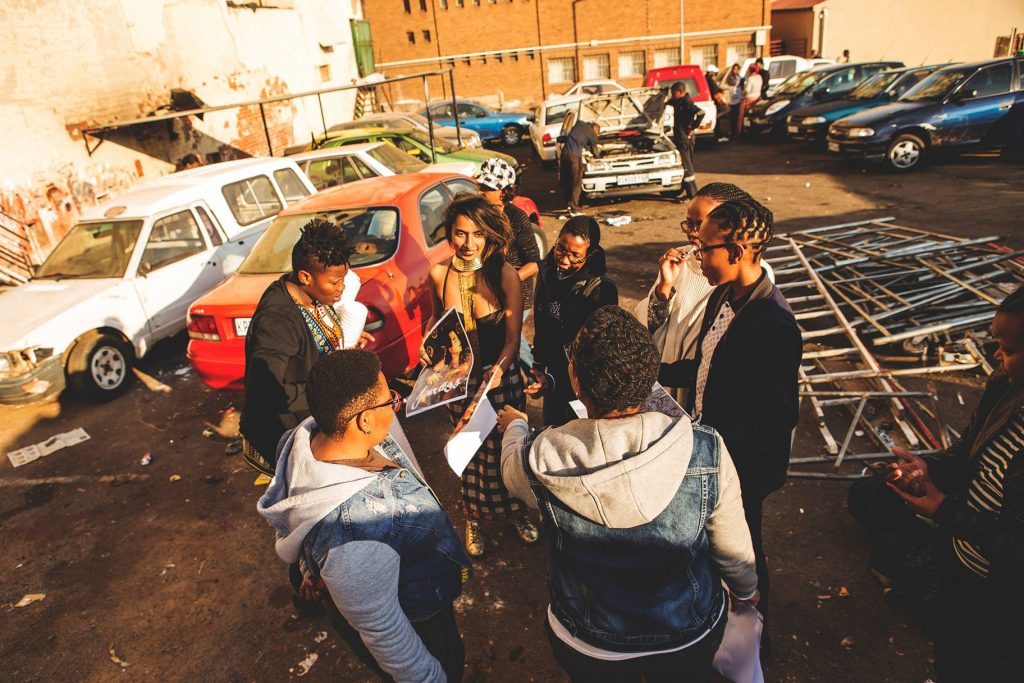
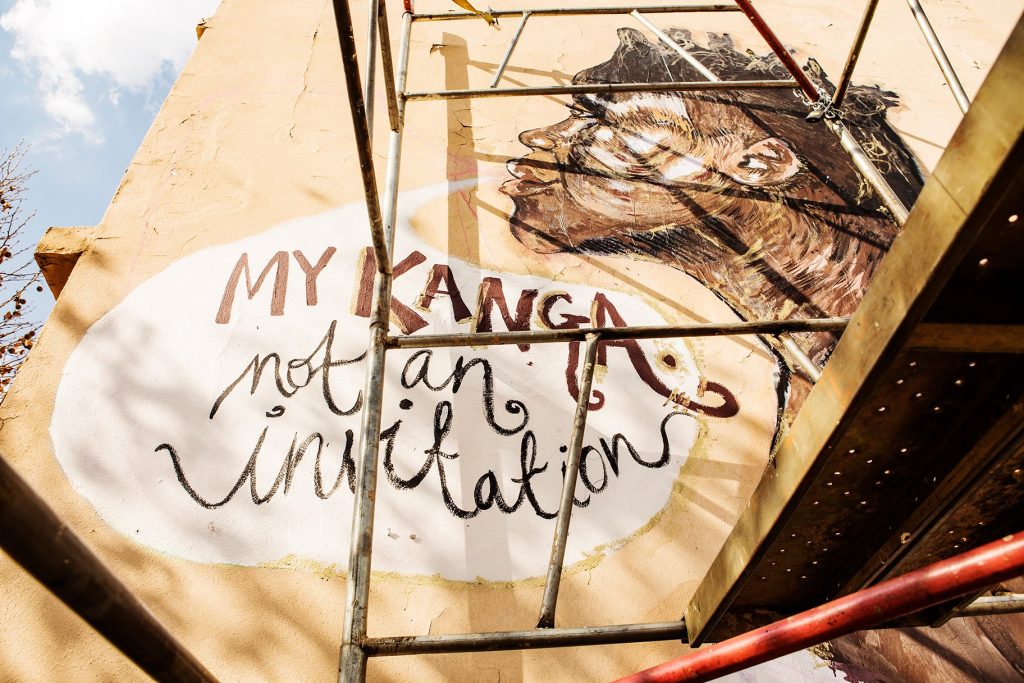
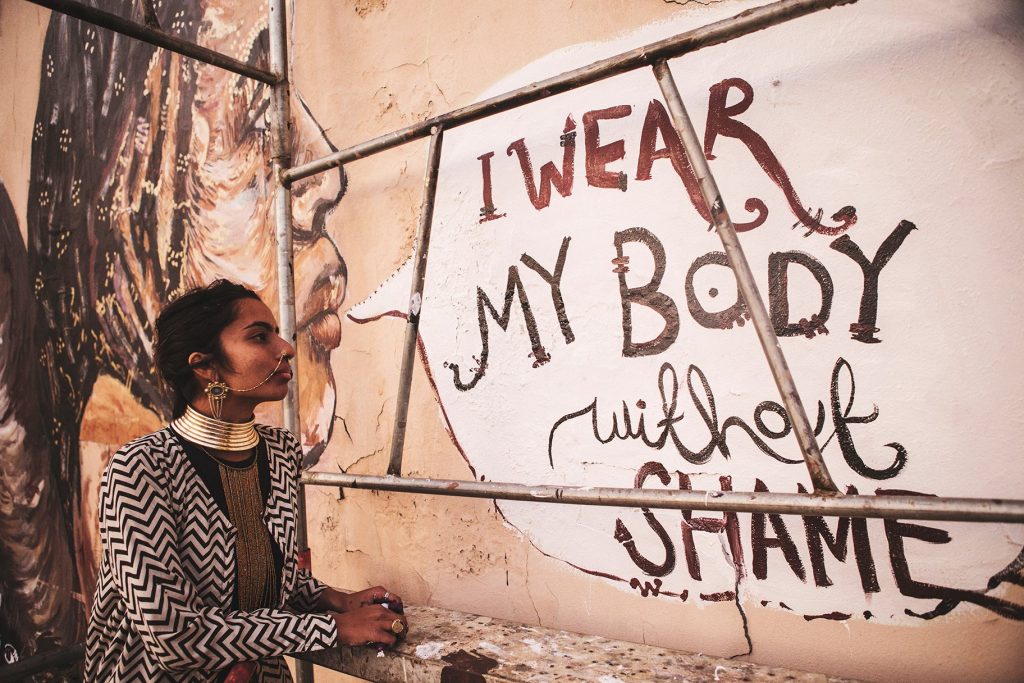

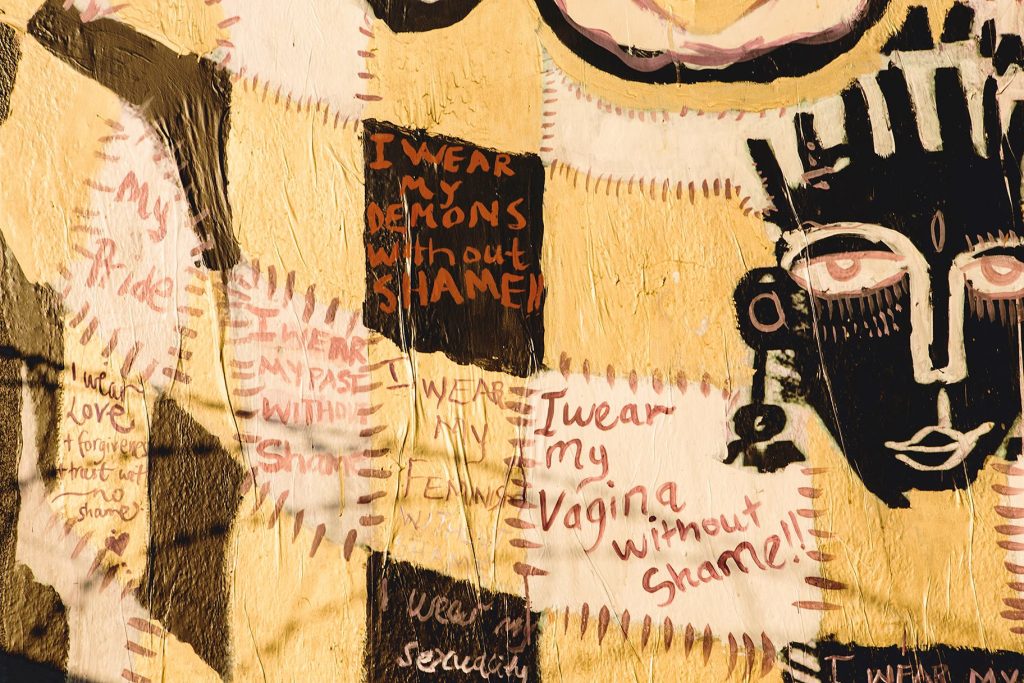

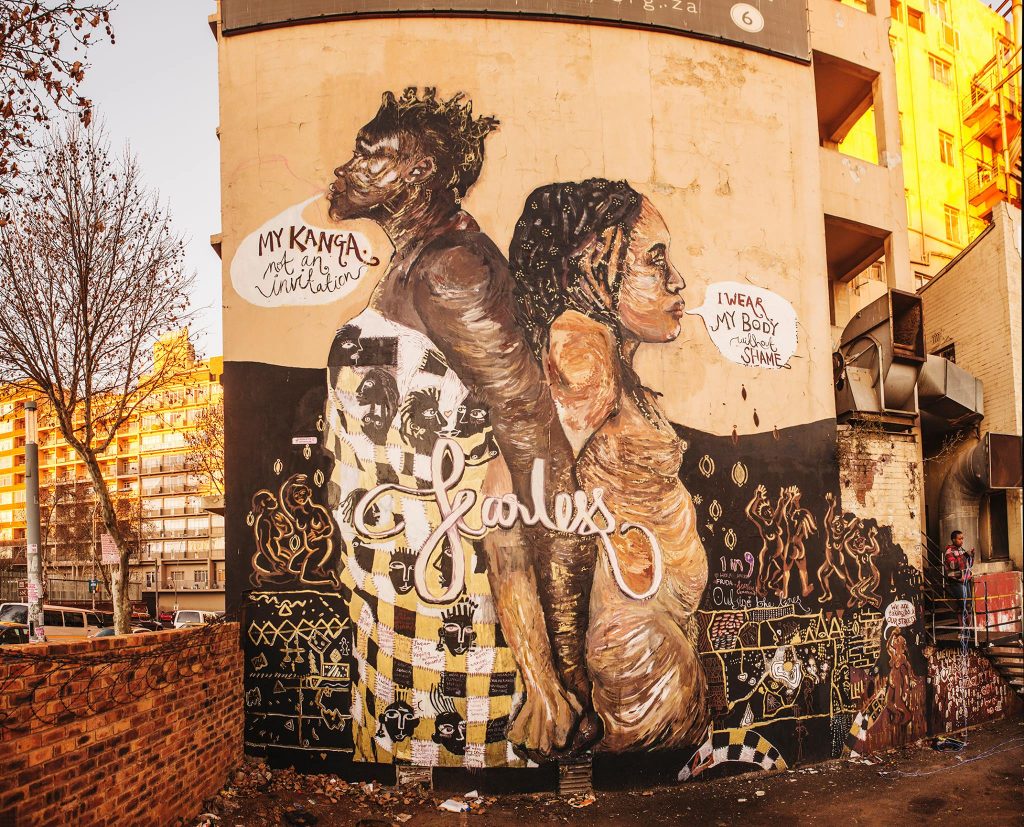
Johannesburg is a city mined for it’s gold but lit by the sun, at the intersection of a historical hill crowned by an old woman’s prison, and a neighbourhood considered notoriously unsafe by some- Two women stand defiant painted in black and gold on the walls of an old maternity ward, reclaimed by those seeking shelter. One of them wears a kanga around her body, the other stands exposed. Their hands are linked together as if linking the stories of countless women in South africa (and the world) that have stood for the autonomy of their bodies. Symbolizing the struggle of a woman raped by the current prime minister of South Africa ten years ago, they affirm-
“I wear my body without shame”
 Images of the exposed African body have flooded colonial anthropological studies for centuries; either exoticised or allowed to be exposed when culturally sanctioned. But when acting upon it’s own autonomy the female body has also been used to claim space, and become an act of protest. We collaborated with two local organizations, One in Nine campaign, formed as a response to the Zuma trial, and HOLAAfrica. Both organizations work together to document and showcase the lives of women and their stories, supporting women through the process of reporting sexual crimes and moving through justice systems. In South Africa, we explore the theme ‘Outside the lines of Body’ with our partner FRIDA| Young Feminist Fund.
Images of the exposed African body have flooded colonial anthropological studies for centuries; either exoticised or allowed to be exposed when culturally sanctioned. But when acting upon it’s own autonomy the female body has also been used to claim space, and become an act of protest. We collaborated with two local organizations, One in Nine campaign, formed as a response to the Zuma trial, and HOLAAfrica. Both organizations work together to document and showcase the lives of women and their stories, supporting women through the process of reporting sexual crimes and moving through justice systems. In South Africa, we explore the theme ‘Outside the lines of Body’ with our partner FRIDA| Young Feminist Fund.
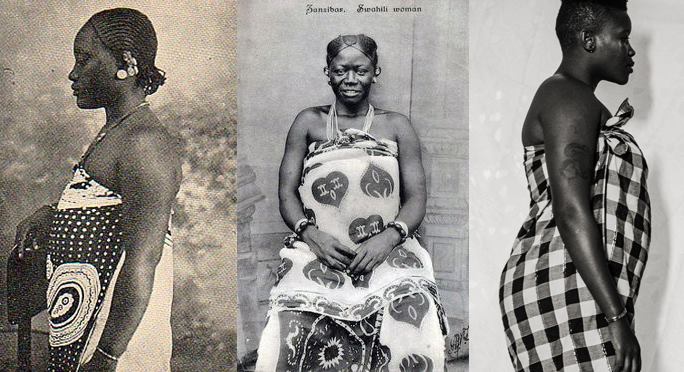
2016 marks ten years since Zuma raped a family friend’s daughter. In court she was publicly shamed, with her previous history of sexual abuse and testing positive for HIV used against her to justify her rape as well as reiterating the universal trope that women ‘invite’ rape through their clothing. In this case, a kanga.
 In an intimate ritual, the fearless collective workshop explored dual ideas of “Pure and Impure”. The female form is constantly being qualified and sanctioned based on its purity. The symbol we explored here was a daily ritual of cleansing. Each woman sat before a tub of warm water, steeped in petals, and began to wash off layers of shame that society had placed upon us. Collectively we washed off the ‘blame’ from our sexual offenders, the ‘shame’ of choosing our own partners. We washed off the pain of rejection, the judgement of body hair, the taboos of alternate sexualities, the catcalls of communities.
In an intimate ritual, the fearless collective workshop explored dual ideas of “Pure and Impure”. The female form is constantly being qualified and sanctioned based on its purity. The symbol we explored here was a daily ritual of cleansing. Each woman sat before a tub of warm water, steeped in petals, and began to wash off layers of shame that society had placed upon us. Collectively we washed off the ‘blame’ from our sexual offenders, the ‘shame’ of choosing our own partners. We washed off the pain of rejection, the judgement of body hair, the taboos of alternate sexualities, the catcalls of communities.

In the second part of the ritual, we took from a bowl of earth and gold dust (significant of all the gold mined in Joburg) and wore it as war paint. As if taking all the mud that the world slung on us and wearing it as adornment, without shame. Wearing our sex, our pleasure, our consent on our faces. Turning ‘impurities’ into fire. Our dirt into gold.

At the intersection of constitutional hill, and Hillbrow (a neighbourhood considered notoriously unsafe by some), overlooking a woman’s jail- we found- The Florence.
A vacant husk of a building, once the most well respected maternity hospital in Joberg, now home to squatters.

‘I wear my body, without shame’
